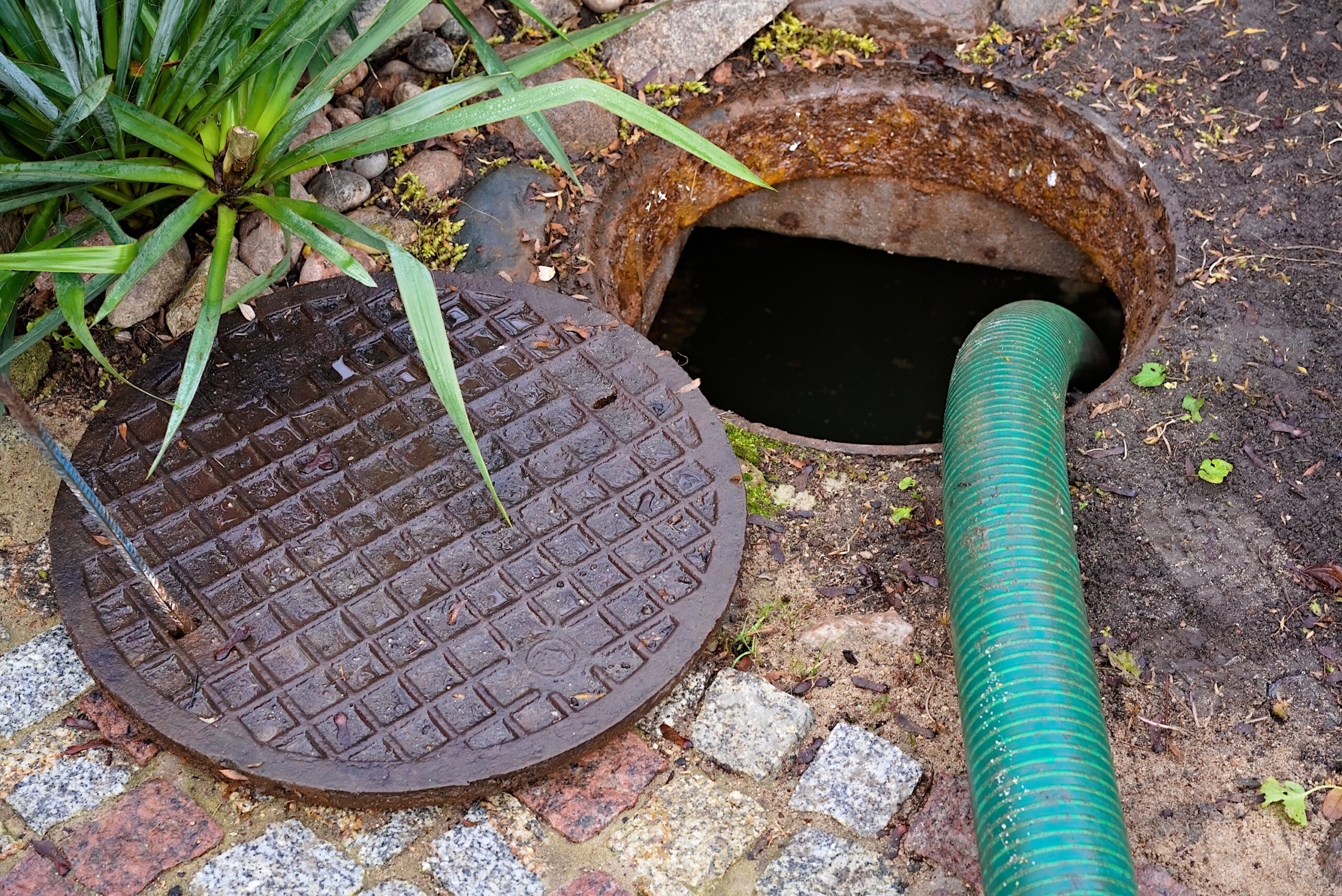The typical home septic system consists of a number of components. Failure of any of these elements can result in loss of function and may lead to the breakdown of the entire system. The primary physical components of the septic system include the following:
- The pipes leading from the home to the septic tank
- The septic tank, which holds the effluent and solid waste
- An outlet that allows water to pass from the tank
- A distribution box that portions the water to various areas of the drainfield
- The pipes that facilitate distribution
- The drainfield, where final purification and remediation of wastewater occurs
Problems can arise in any of these areas. Clogged pipes leading to the septic tank system may cause backups or overflows inside the home; this can also occur due to excess water in the septic tank itself or a clog in the outlet that allows water to escape from the tank. Uneven dispersal of water through the distribution box or the attached pipes may also cause flooding of portions of the drainfield. However, it is within the septic tank itself that most major problems typically crop up and must be addressed.
Septic processing
Water and solid wastes produced by the household are transferred to and stored within the septic tank. Inside the tank, bacteria work to break down biodegradable materials, which typically are suspended in the water or that collect as sludge at the bottom of the tank. Water floats to the top along with lighter substances that include oils, grease and fats. Septic tank problems usually arise when the bacterial decomposition of these materials is not rapid enough to manage the incoming volume of waste and wastewater into the system. As a result, sludge and other solid wastes remain in the tank and cannot be removed through the water outlet for dispersal into the drainfield. Increasing the efficiency of bacterial processing can often reduce or eliminate these problems and provide added life for the septic tank system.
The benefits of aerobic bacteria
Because the traditional septic tank is an almost completely sealed environment, it contains primarily anaerobic bacteria. These bacterial organisms reproduce and function without the need for oxygen and break down biodegradable substances within the tank at a relatively slow rate. By contrast, aerobic systems oxygenate the water to promote the growth of aerobic bacteria, which break down particulate matter much more efficiently and quickly. This allows water to pass more readily through the distribution box and into the drainfield, reducing the likelihood of overflows or buildup of excessive sludge at the bottom of the septic tank. Aerobic bacteria systems are recommended by a number of state regulatory agencies due to their improved decomposition rates; they can even be used in failing systems to produce quick results and remediate drainage issues before they become critical failures.
Introducing aerobic bacteria into the existing septic tank system can help homeowners avoid the exorbitant costs of replacement and improve its function considerably. The products offered by Aero-Stream will maximize septic tank efficiency by converting the existing anaerobic tank into an aerobic septic system. The cost of these systems is surprisingly reasonable and may provide years of added life for older septic tanks and drainfields.











